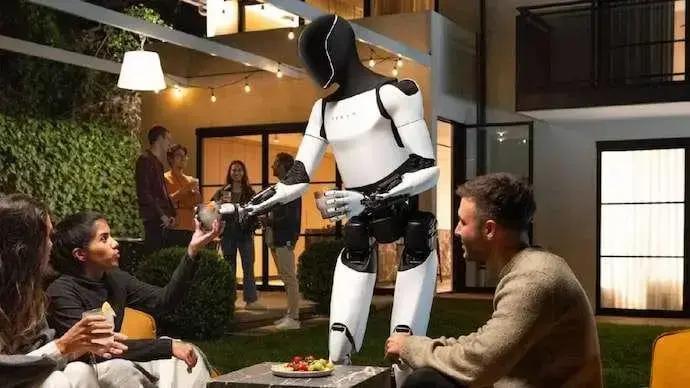Elon Musk’s vision for Tesla extends beyond electric vehicles. He’s now focusing on humanoid robots, like the Optimus, and Full Self-Driving (FSD) technology. He believes these advancements will significantly impact Tesla’s future and possibly reshape the global economy. This shift comes as Tesla faces increasing competition in the EV market, particularly from Chinese manufacturers.
Humanoid Robots: Tesla’s Next Big Venture?
Musk predicts humanoid robots will become the most significant product in history. He envisions a future where robots outnumber humans, potentially by a ratio of 5 to 1. This ambitious claim suggests a fundamental shift in how we live and work. He even links this robotic revolution to a potential universal high income.
Tesla aims to produce at least 500,000 Optimus units by 2027. This ambitious target highlights Tesla’s commitment to robotics. To achieve this, Tesla will leverage its expertise in AI and manufacturing, developed through its EV production. Interestingly, some experts believe that humanoid robots, like those being developed by Tesla, could one day be commonplace, assisting with tasks both at home and in professional settings.
This projection, however, is met with skepticism due to the current challenges facing the robotics industry. Developing sophisticated, reliable, and affordable humanoid robots is a complex undertaking. Like other emerging technologies showcased at CES, the actual timeline for mass adoption of humanoid robots remains uncertain.
This venture into robotics represents a significant diversification for Tesla. While the company continues to navigate the competitive EV landscape, Musk is clearly betting on humanoid robots to drive future growth. For some, it recalls other innovative projects undertaken by the entrepreneur, such as SpaceX’s development of reusable rockets.
The Role of FSD in Tesla’s Future
Full Self-Driving (FSD) technology is another key aspect of Musk’s strategy. He believes FSD will be crucial not only for Tesla’s vehicles but also for the development of humanoid robots. The underlying AI technology could potentially power both. Musk’s ventures often demonstrate a synergy, as seen with Tesla’s battery technology being used in Powerwall energy storage systems.
The advancements in FSD are expected to contribute to Tesla’s overall success. By enhancing the capabilities of its vehicles, Tesla aims to maintain its edge in the market. This strategy is especially important as competition intensifies, even within the electric vehicle market itself, as new electric car models from established brands become available.
FSD is expected to play a vital role in the development and functionality of Tesla’s humanoid robots. This integration of FSD technology into the Optimus robot could unlock several practical applications, including autonomous navigation and task execution. The future of humanoid robots and their integration with technologies like AI is still unfolding, presenting both opportunities and challenges.
Musk’s focus on FSD and humanoid robots represents a long-term vision. While the immediate focus remains on overcoming current hurdles in both technologies, the potential impact on Tesla’s future is undeniable. AI’s expanding role in various sectors, from gaming to manufacturing, underlines the potential of this technology in shaping the future.
Tesla’s move into the humanoid robots market is a bold one, filled with both potential and uncertainty. While Musk’s projections are optimistic, the road to achieving them is paved with challenges. The success of these ventures will depend not just on technological advancements, but also on market acceptance, regulatory hurdles, and the overall evolution of the robotics field. One thing’s for sure, Musk’s vision will keep the world watching with interest.
Via Wccftech


